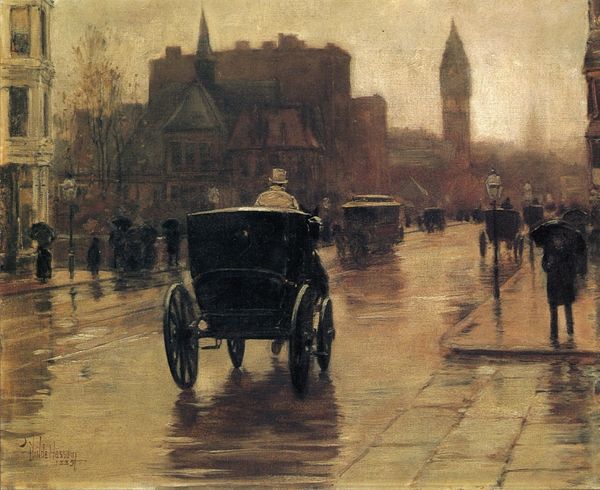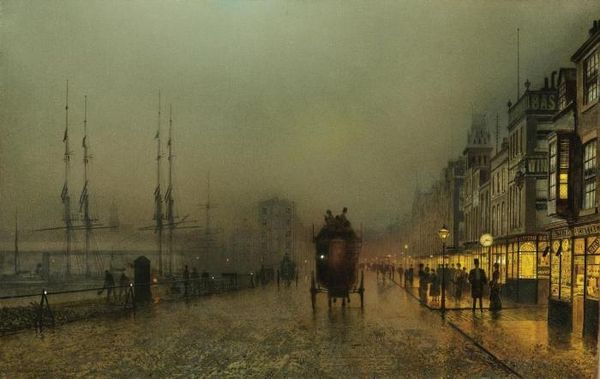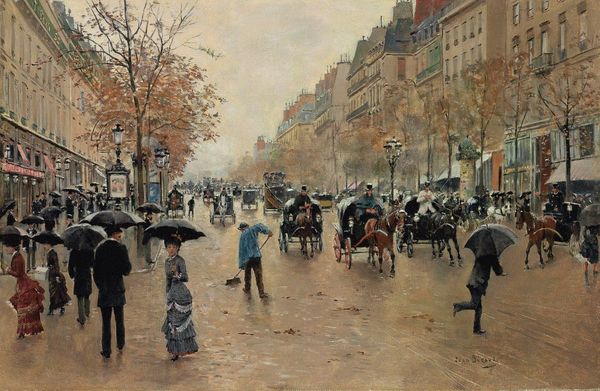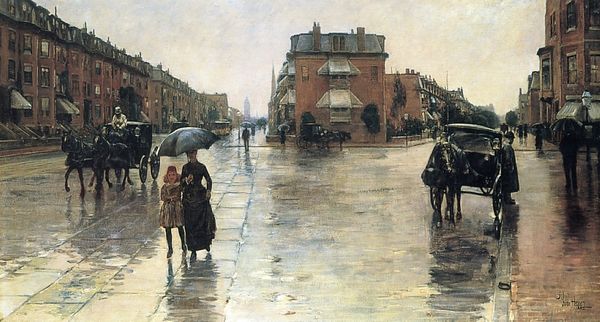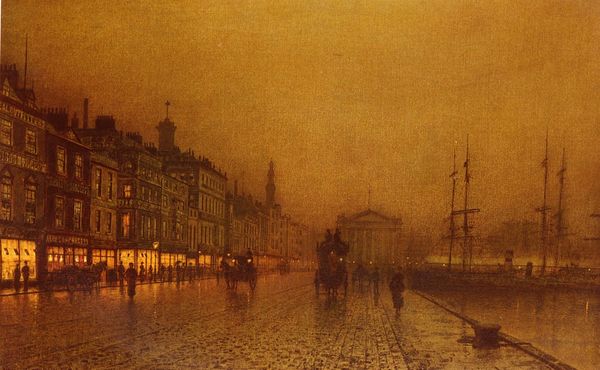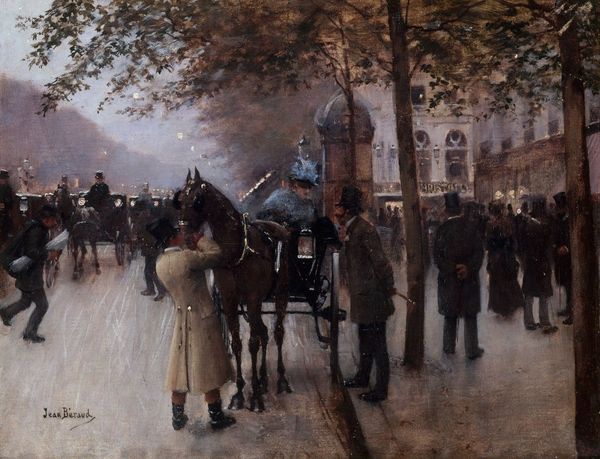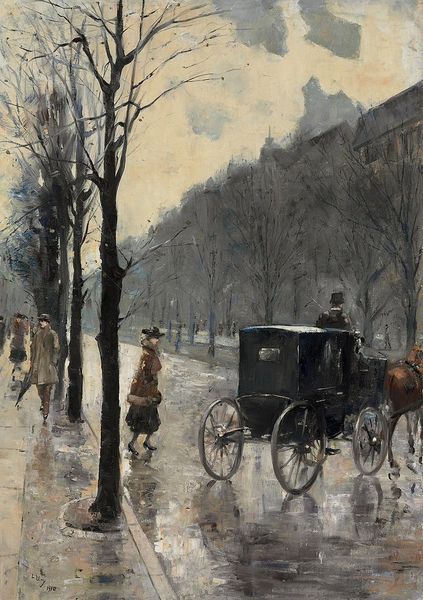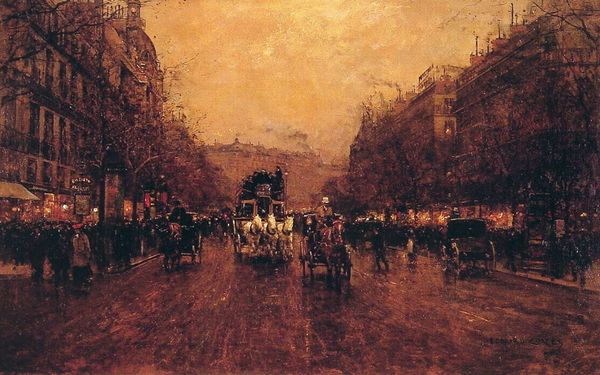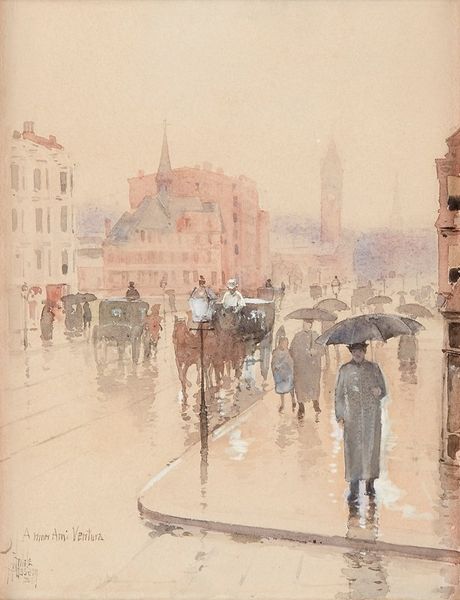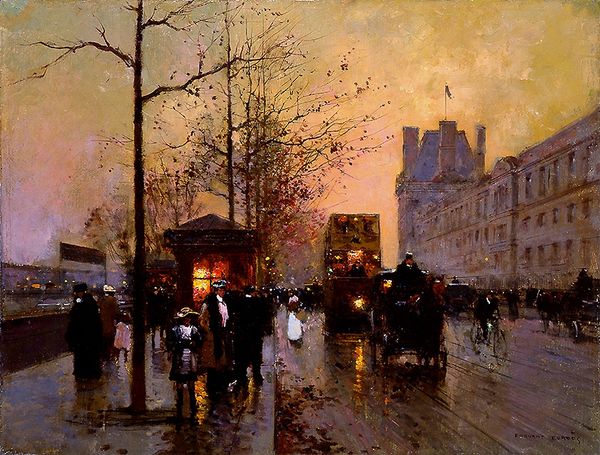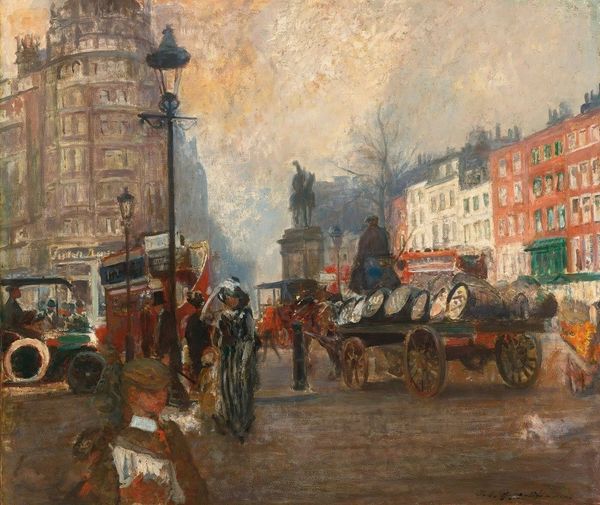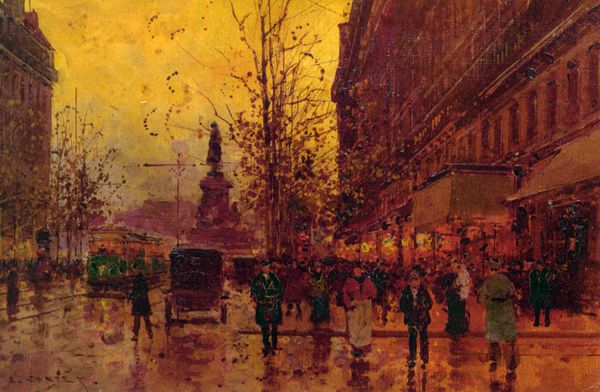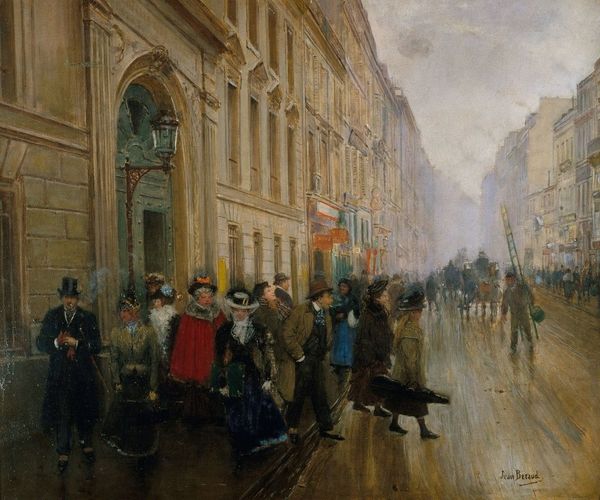
Copyright: Public domain
Curator: Childe Hassam's "Columbus Avenue Rainy Day," painted in 1885, captures a moment of urban life in late 19th-century New York City using oil on canvas. Editor: It’s… evocative, in a melancholy sort of way. The muted colors, the slick streets, it creates a somber yet beautiful impression. Almost cinematic, actually. Curator: The romantic depiction of urbanity was becoming more en vogue at this time; however, note the deliberate blurring of faces, and the reduction of the figures to almost abstract forms. It really speaks to the anonymity that the city imposes. How does this painting contribute to our understanding of social divisions? Were certain modes of transportation only accessible to people in higher classes? Editor: Definitely. Carriages weren’t exactly democratic transportation, were they? The blurred figures are interesting. The figures of privilege have power, they can disappear if they want into the depths of those carriages. They can literally afford anonymity. And who doesn’t have that power? Well, that's really brought into relief through the composition. It focuses so clearly on those divisions. Curator: Hassam’s impressionistic style is noteworthy here; using visible brushstrokes and focusing on the effect of light and atmosphere is part of what makes it successful. I’m wondering if the conditions of labor for all members of that community are part of this reading too. Everyone on that street in that moment is actively producing and relying on each other, but some might consider one’s labour more worthwhile. Editor: And what does the rain stand for, symbolically? It washes things away, blurs lines—both literally and figuratively—disrupting the clarity of social standing, or perhaps obscuring injustice. It’s a shared experience, though definitely experienced differently depending on your social positioning. The people riding have covers from the rain while some others do not. The composition itself, I mean. Hassam captured this urban moment so poignantly. The fact that these historical and social contexts can resonate so much with today’s conversations on equality proves the test of time, truly. Curator: A good reminder of art's ability to bridge eras, provoking introspection on our shared yet unequal human experience.
Comments
No comments
Be the first to comment and join the conversation on the ultimate creative platform.
